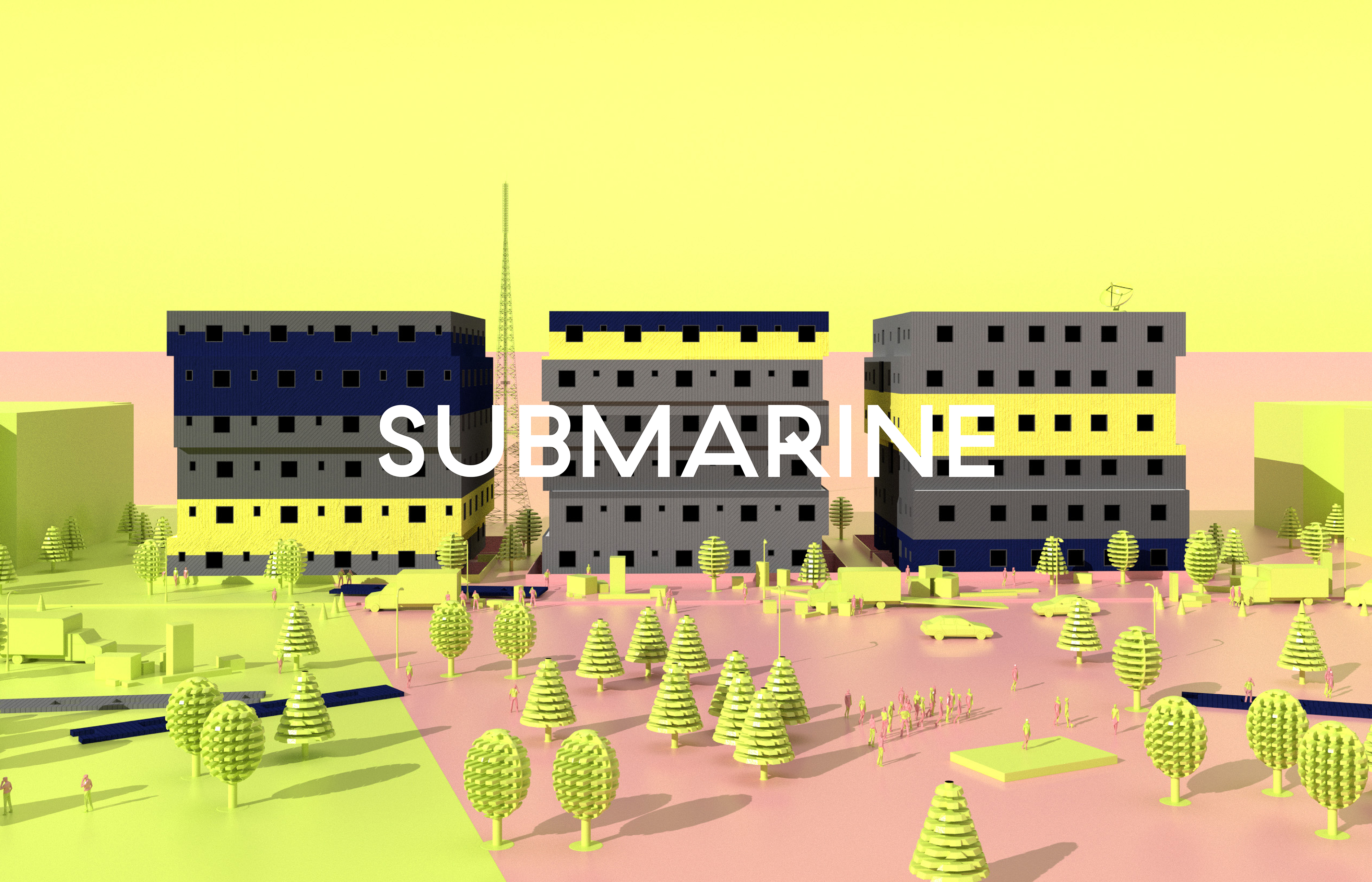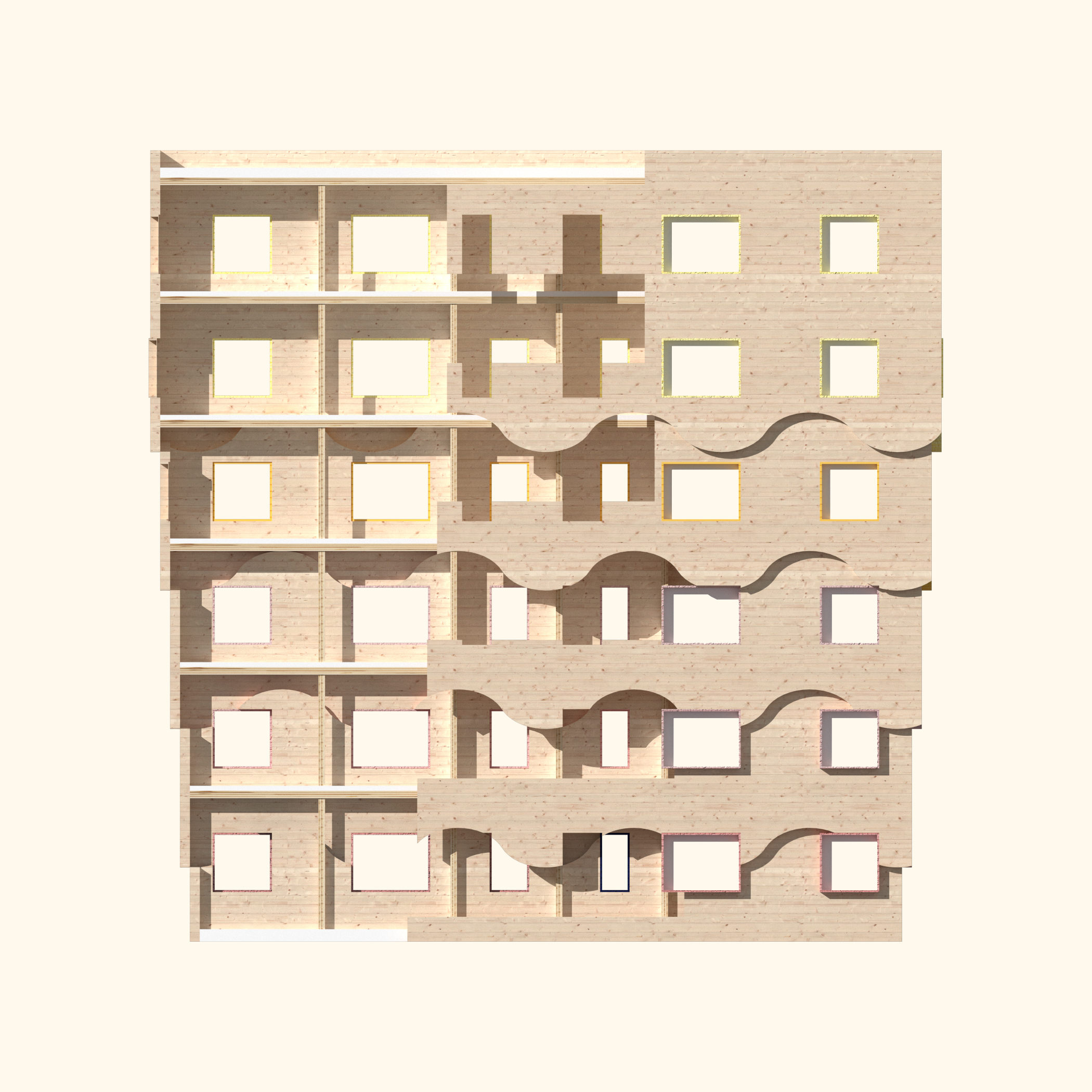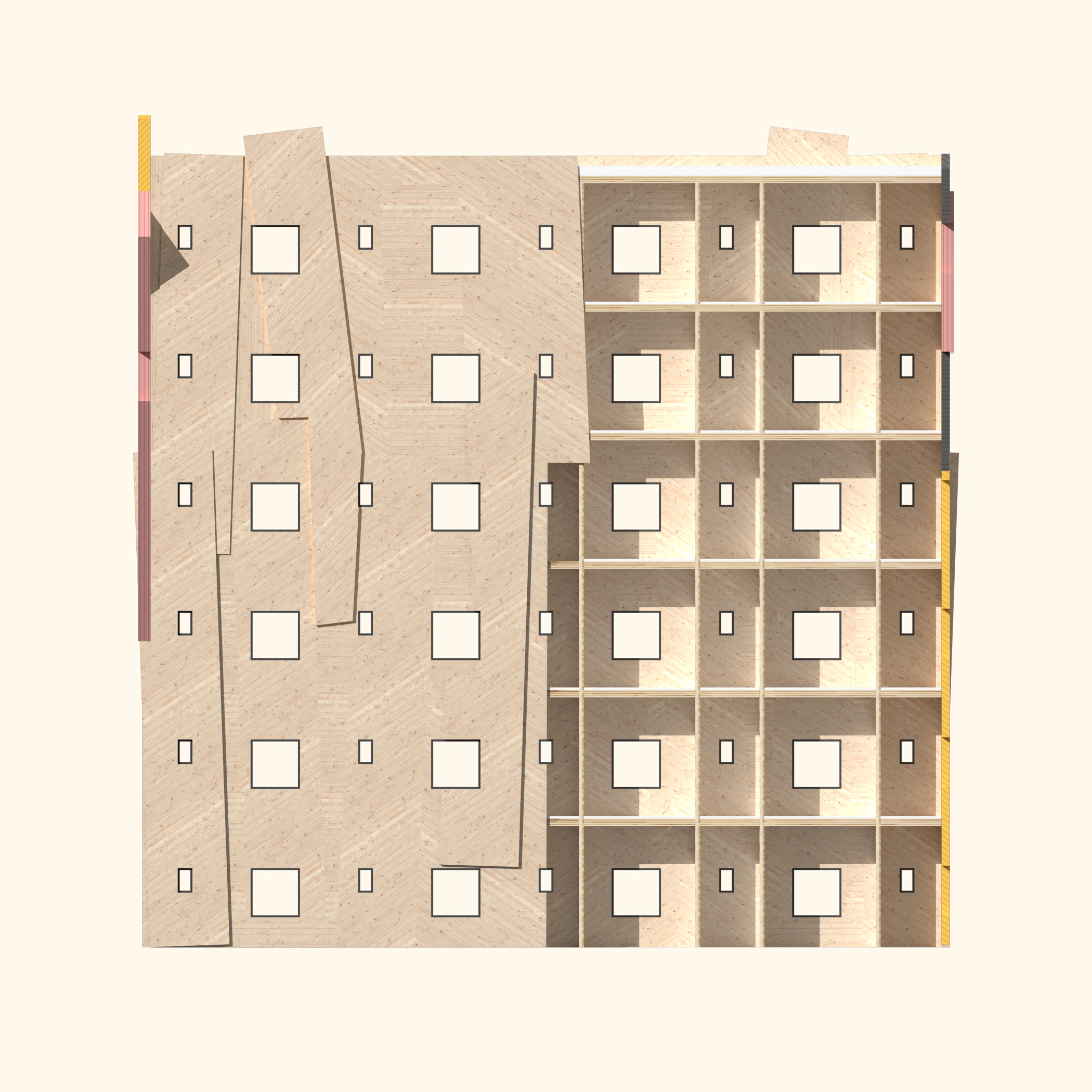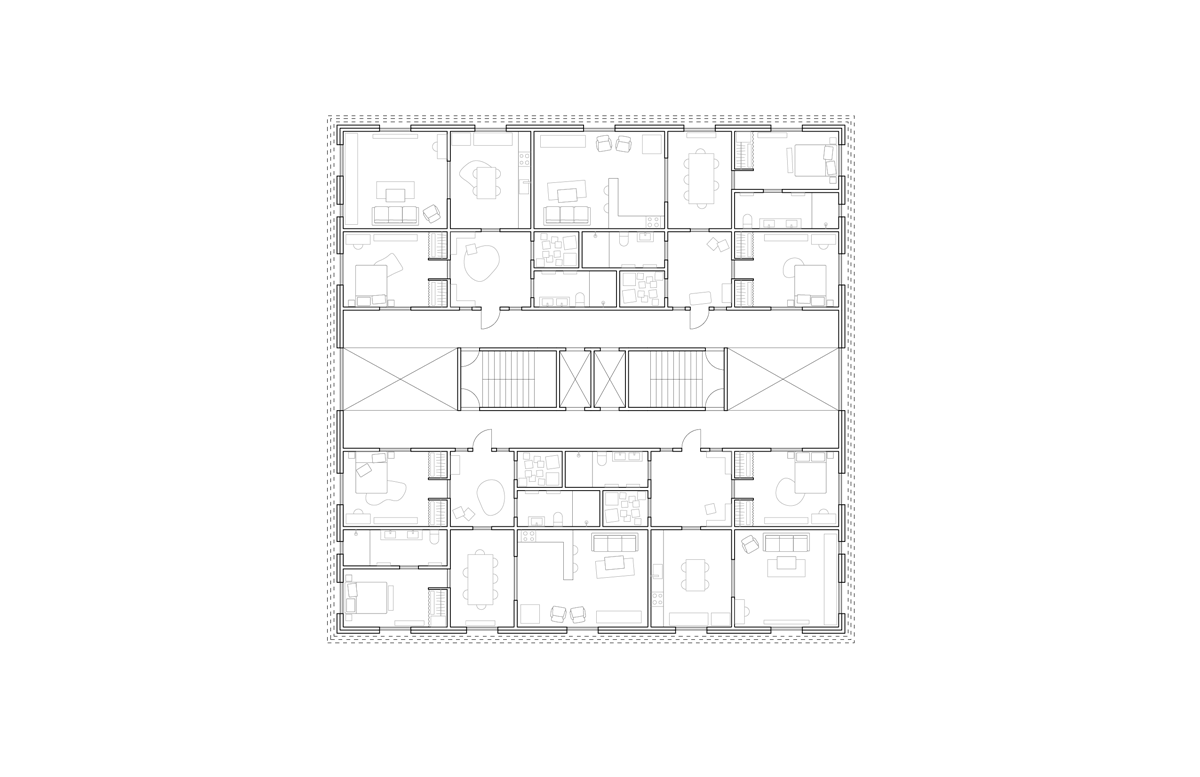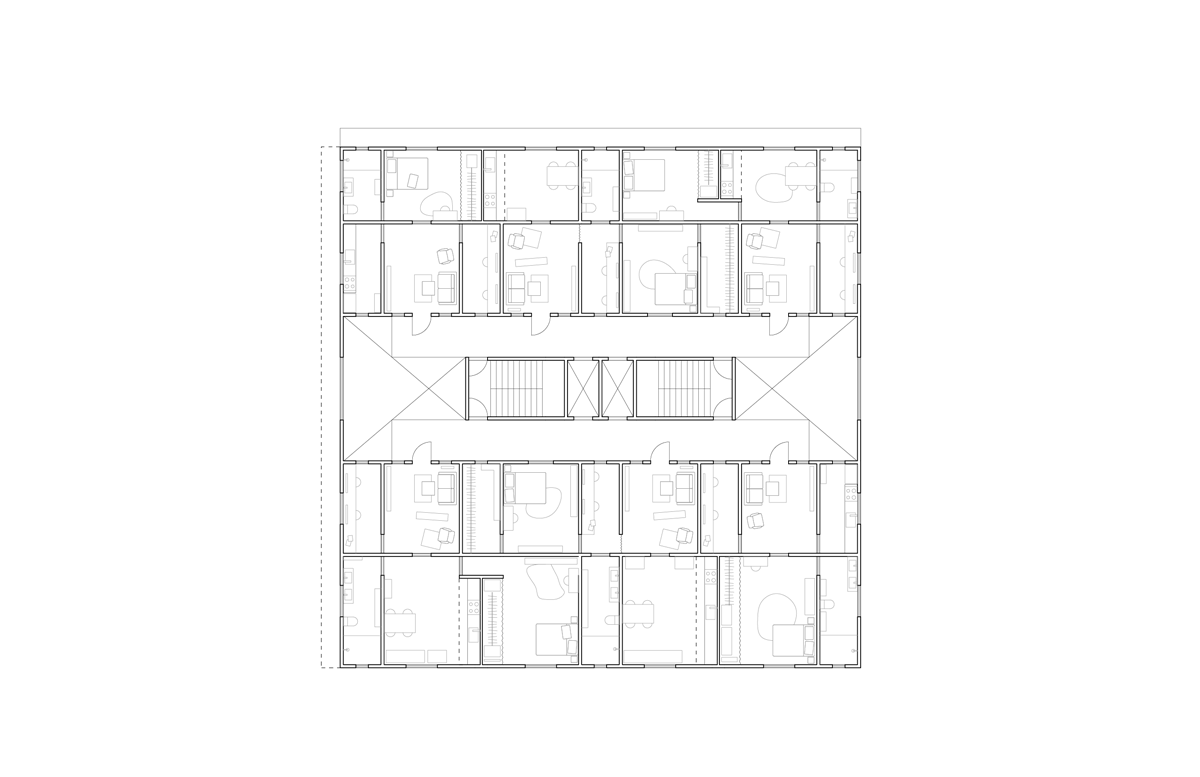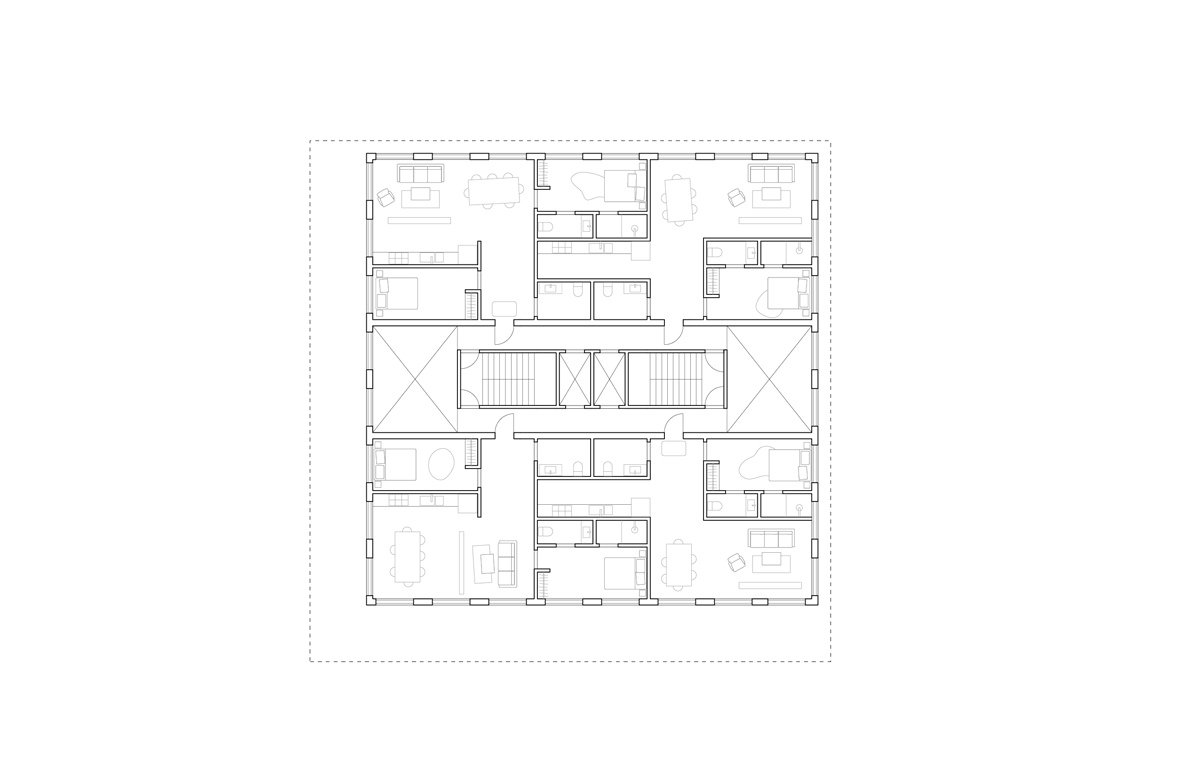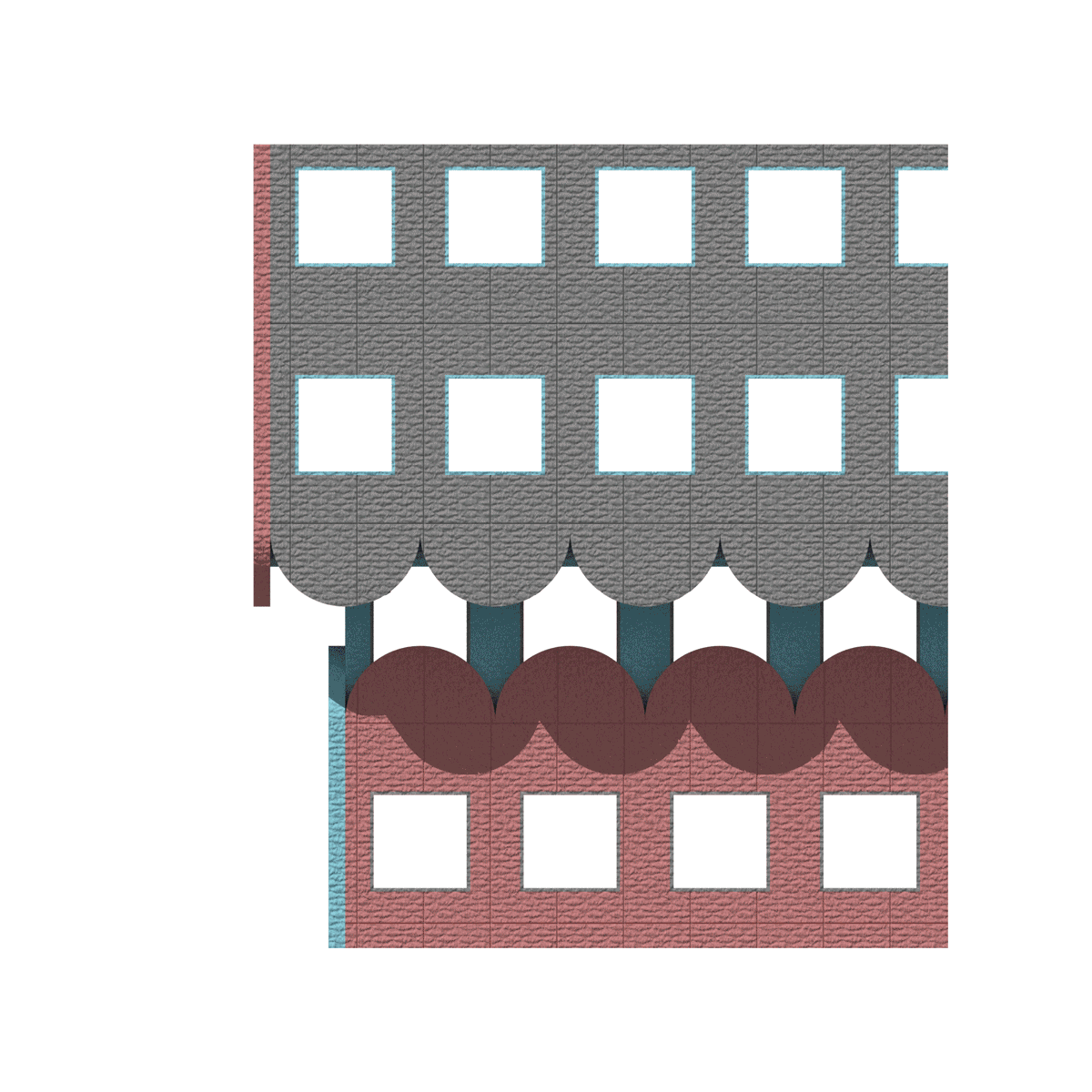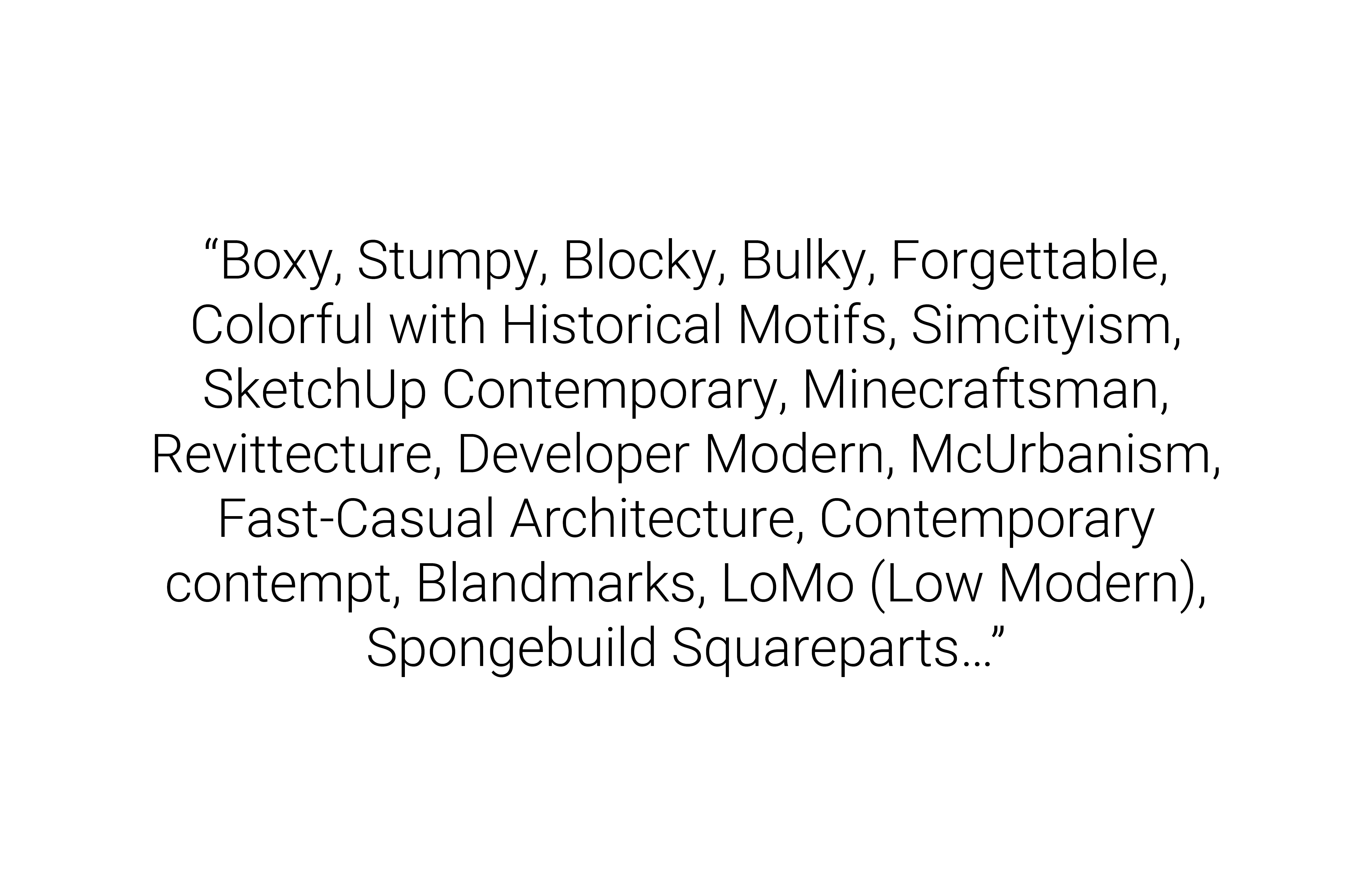4 OVER NONE
IBC Code
The International Building Code’s categorization of construction materials and fire codes have largely driven market-rate housing in American cities for the past decade. Discovered by an architect in California in the early 1990s, Type V (woodframe construction) over Type I (non-combustible materials such as concrete or steel) commonly known as “5-Over-1” allows for multi-story wood structure to be built over a podium of concrete. Currently reaching a tipping point with maximum floor height at 85’ (the length of the fire truck ladder), the 5-Over-1 has exhausted itself.
Advertisements
“4 Over None” is a pitch to developers to flip the formula from 5-Over-1 to Type IV (heavy timber) by greatly reducing overall construction timeline encouraging long-lasting wall assemblies built of cross laminated timber. MALL’s developer advertisements propose a series of colorful triplets that can be built as a set of three or mixed and matched on any given site. TOMORROW, SUBMARINE, GOLDFISH, and LEMONADE collectively imagine urban scenarios where 4 Over None is optimistic, plastic, and toy like.
Yeah! More Color!
MALL’s interest in color blocking architecture combines ideas found on fashion runways with 4 Over None facades. The tectonic of CLT blanks measuring 9’X50’ is on display as panels are cut into a variety of shapes and configurations. The exterior cladding system, which is also the building’s superstructure, places emphasis on orientation of each panel, but also suggests a way to color in architecture. Blocks of color connect back to the tectonic of CLT blank as each exterior is color-coded. More akin to a Marni sweater than facadism, 4 Over None is stripy and chunky, yet suggests a new model for market rate housing.
On Instagram
Follow @sketchup_contemporary, an anonymous documentation of Boxy, Bulky, LoMo, Forgettable, Simcityism, Revittecture, Blankmarks, and Developer Modern architecture as a result of the proliferation of 5-Over-1 development. Fast-Casual Architecture exists most readily in cities such as Boston, Seattle, Portland, San Diego, Atlanta, and Denver.
Location: Portland Date: 2020Type: Research, Development, Housing
CREDITS
Project team: Jennifer Bonner, Aryan Khalighy, Daniel Haidermota
CREDITS
Project team: Jennifer Bonner, Aryan Khalighy, Daniel Haidermota

